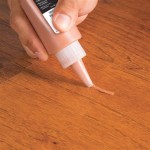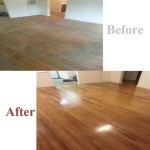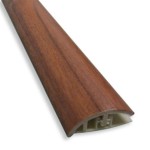Laying vinyl floors can be both a rewarding and economical way to upgrade the look and feel of a room. Vinyl flooring can be installed over existing floors, and is available in a variety of colors and styles to suit any décor. With the right tools and supplies, laying vinyl floors can be a relatively simple do-it-yourself project.
Preparation
Before you can begin installing your vinyl floor, there is a certain amount of preparation that needs to be done. The existing floor should be cleaned and cleared of any debris, and any cracks or holes should be filled with wood putty. The floor should then be leveled and smoothed and any old adhesive residue should be removed. Once the existing floor is clean and level, it’s time to begin laying your vinyl.
Materials
Before you begin your project, you should make sure you have all the necessary supplies. You’ll need the vinyl flooring, adhesive, trowel, chalk line, utility knife, and measuring tape. If you’re laying tiles, you’ll also need a tile cutter and grout. You may also want to have a wet saw or jigsaw on hand for cutting the vinyl.
Layout and Measurement
Before you begin laying the vinyl, it’s important to measure the room and plan out the layout. Once you have the measurements, you can lay out the vinyl on the floor so you can get an idea of how it will look. Make sure to leave at least a 1/4″ gap around the edges of the room, and make sure to mark the center lines of the room with a chalk line.
Installation
Once you have the layout planned out, you can begin the installation process. Start by spreading the adhesive onto the floor, using the trowel. Make sure to spread it evenly and to cover the entire surface. Then, take your vinyl flooring and lay it onto the adhesive. You may need to cut the pieces to fit, using the utility knife or wet saw. Once all the pieces are in place, you can use a roller to flatten them out and make sure they are firmly attached to the adhesive.
Finishing Touches
Once the vinyl is in place, you can add any finishing touches. For tiles, you may need to grout the edges and make sure that the seams are properly sealed. For sheets, you may need to apply a sealant to the edges, as well as any seams or joints. Once this is done, you can stand back and admire your newly-laid vinyl floor.
Maintenance and Care
Vinyl floors are relatively easy to maintain, and require very little in the way of upkeep. You should sweep and mop the floors regularly to keep them looking their best. You should also avoid using harsh chemicals or abrasives on the floors, as this can cause discoloration or damage. With regular care and maintenance, your vinyl floors will look great for years to come.

:no_upscale()/cdn.vox-cdn.com/uploads/chorus_asset/file/19494137/howto_vinylfloor_08.jpg)

/cdn.vox-cdn.com/uploads/chorus_image/image/65891755/howto_vinylfloor_05.0.jpg)











Related Posts








